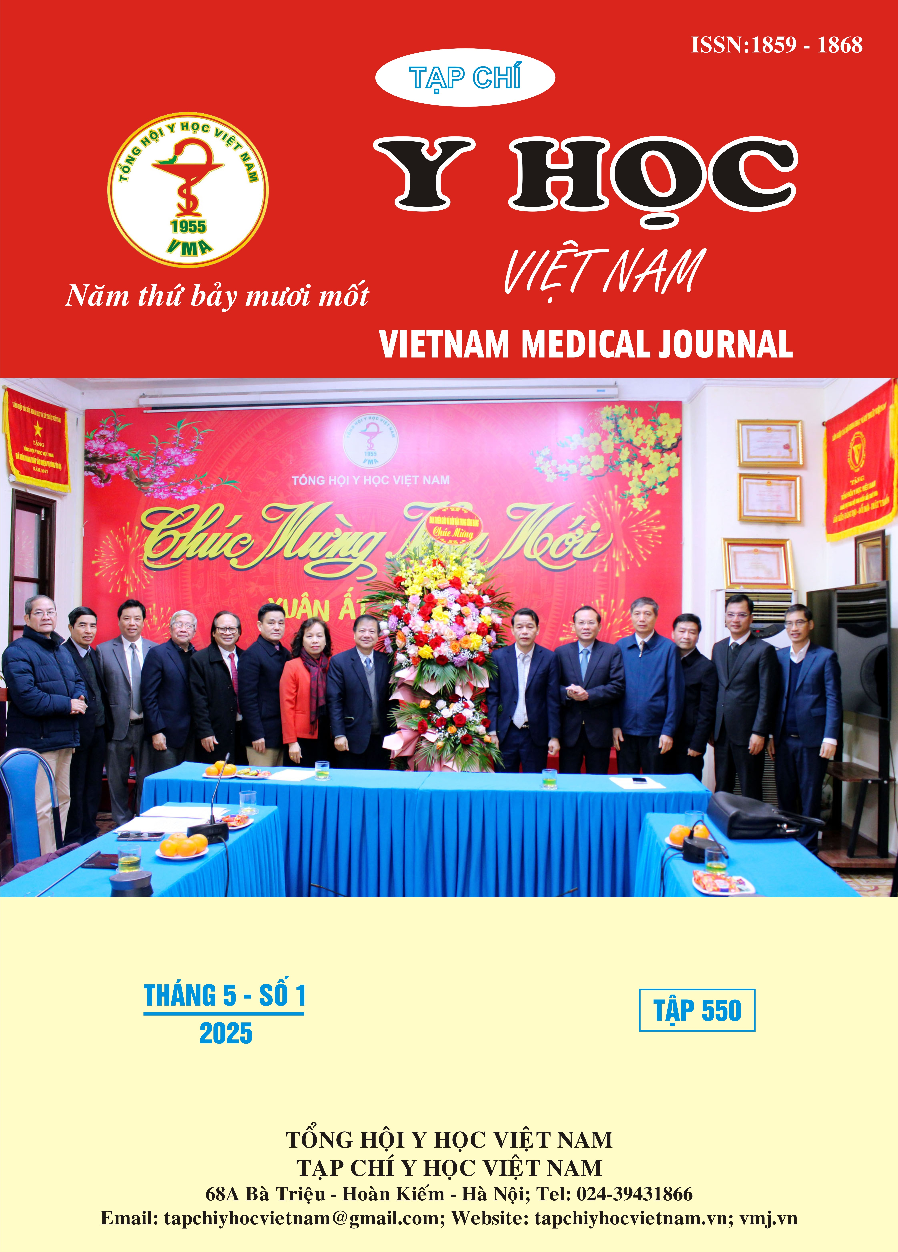MANAGEMENT OF PATELLAR DISLOCATION IN CHILDREN: ROLE OF MRI
Main Article Content
Abstract
Background: A thorough understanding of the clinical and imaging features associated with patellofemoral dislocation is essential for selecting the optimal treatment strategy. Objective: To evaluate the role of magnetic resonance imaging (MRI) in the treatment of patellofemoral dislocation. Methods: This retrospective descriptive study analyzed a case series of 33 patients (35 knees) aged 7–16 years treated according to a diagnostic and treatment algorithm from 2013 to 2021. The conditions included initial dislocation with osteochondral fracture, recurrent dislocation, and habitual dislocation, with follow-up durations ranging from 2 to 10 years (mean: 5.5 years). Treatment modalities included medial reefing, medial patellofemoral ligament reconstruction, lateral retinacular release, and quadriceps lengthening. Outcomes were evaluated based on recurrence, complications, and functional scores (Kujala score). Correlations between clinical findings and MRI features were assessed using Pearson’s correlation coefficient and chi-square tests. Results: Of the 35 knees, 2 (5.7%) had an initial dislocation, 30 (85.7%) had recurrent dislocation, and 3 (8.6%) had habitual dislocation. Knees with lateral retinacular contracture exhibited significantly lower prevalence of patellar alignment compared to those without contracture (9.1% vs. 46.2%, p = 0.03). The Q angle correlated highly with the lateral trochlear condyle-lateral ridge length (r = 0.68). Treatments included lateral retinacular release in 27/35 knees (77.1%), medial ligament repair in 23/35 knees (65.7%), medial ligament reconstruction in 12/35 knees (34.3%), and quadriceps lengthening in 1 knee with habitual dislocation. Recurrence occurred in 4/35 knees (11.4%) and was not significantly associated with medial ligament repair or reconstruction (p = 0.07). Kujala scores ranged from 88 to 100 (mean: 95.5). Conclusion: Most features of patellofemoral dislocation can be effectively evaluated using MRI. Significant clinical and imaging correlations include lateral retinacular contracture (p = 0.03) and extensor mechanism alignment (r = 0.68). The treatment algorithm based on MRI findings can be broadly applicable but requires validation with larger sample sizes and longer follow-up periods.
Article Details
Keywords
medial patellofemoral ligament, TT-TG distance (Tibial Tubercle – Trochlear Groove), C-D index (Carton – Deschamps)
References
2. Ali S, Bhatti A. Arthroscopic proximal realignment of the patella for recurrent instability: report of a new surgical technique with 1 to 7 years of follow-up. Arthroscopy 2007; 23(3):305-311. https://doi.org/10.1016/ j.arthro.2006. 11.020.
3. D’Ambrosi, R.; Corona, K.; Capitani, P.; Coccioli, G.; Ursino, N.; Peretti, G.M. Complications and Recurrence of Patellar Instability after Medial Patellofemoral Ligament Reconstruction in Children and Adolescents: A Systematic Review. Children 2021; 8, 434. https://doi. org/10.3390/children8060434.
4. Hu Xu, Chunli Zhang, Guoxian Pei, Qinsheng Zhu, Yisheng Han. Arthroscopic Medial Retinacular Imbrication for the Treatment of Recurrent Patellar Instability: A Simple and All-Inside Technique. ORTHOPEDICS | ORTHO SuperSite.com 2011, Vol.34, No.7, P524-529.
5. Kepler CK, Bogner EA, Hammoud S, et al. Zone of injury of the medial patellofemoral ligament after acute patellar dislocation in children and adolescents. Am J Sports Med. 2011;39(7):1444–1449. DOI: 10.1177/0363546510397174.
6. Lewallen LW, McIntosh AL, Dahm DL. Predictors of recurrent instability after acute patellofemoral dislocation in pediatric and adolescent patients. Am J Sports Med. 2013;41(3): 575–581. https://doi.org/10.1177/ 0363546512472873.
7. Lippacher S. Dejour D, Elsharkawi M, et al. Observer agreement on the Dejour trochlear dysplasia classification: a comparison of true lateral radiographs and axial magnetic resonance images. Am J Sports Med. 2012;40(4):837–843. DOI: 10.1177/0363546511433028.
8. Nam QD V, Toan N N. Role of MRI to Predict Injury Patterns of the Medial Patellofemoral Ligament in Patellofemoral Instability. Biomed J Sci &Tech Res 2(4)- 2018. BJSTR.MS.ID.000784. DOI: 10.26717/BJSTR.2018.02.000784.
9. Seeley M, Bowman KF, Walsh C, et al. Magnetic resonance imaging of acute patellar dislocation in children: patterns of injury and risk factors for recurrence. J Pediatr Orthop. 2012;32(2): 145–155. DOI: 10.1097/BPO. 0b013e3182471ac2.
10. Song JG, Kang SB, Oh SH, et al. Medial soft-tissue realignment versus MPFL reconstruction for recurrent patellar dislocation: Systematic review. Arthroscopy 2016; 32:507-516. DOI: 10.1016/ j.arthro.2015.08.012.


